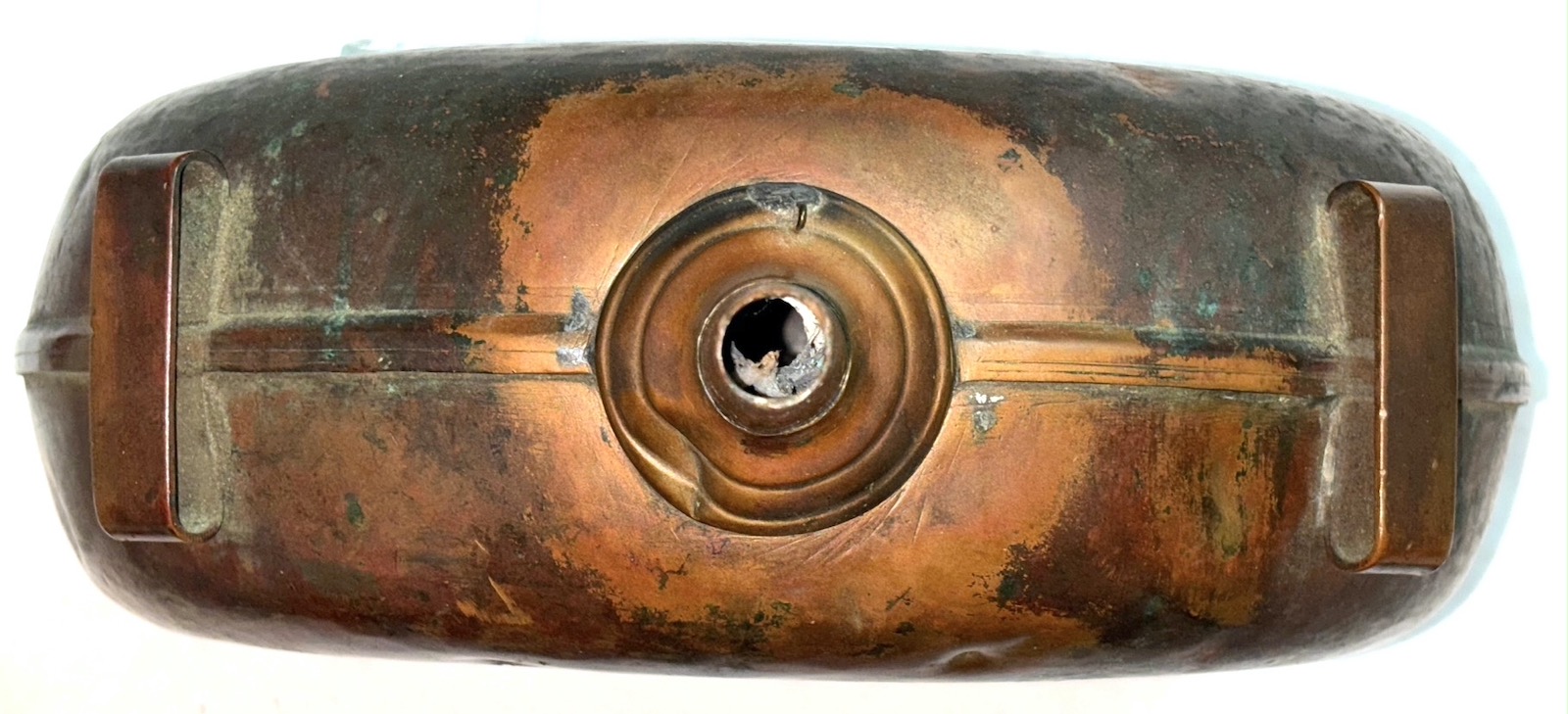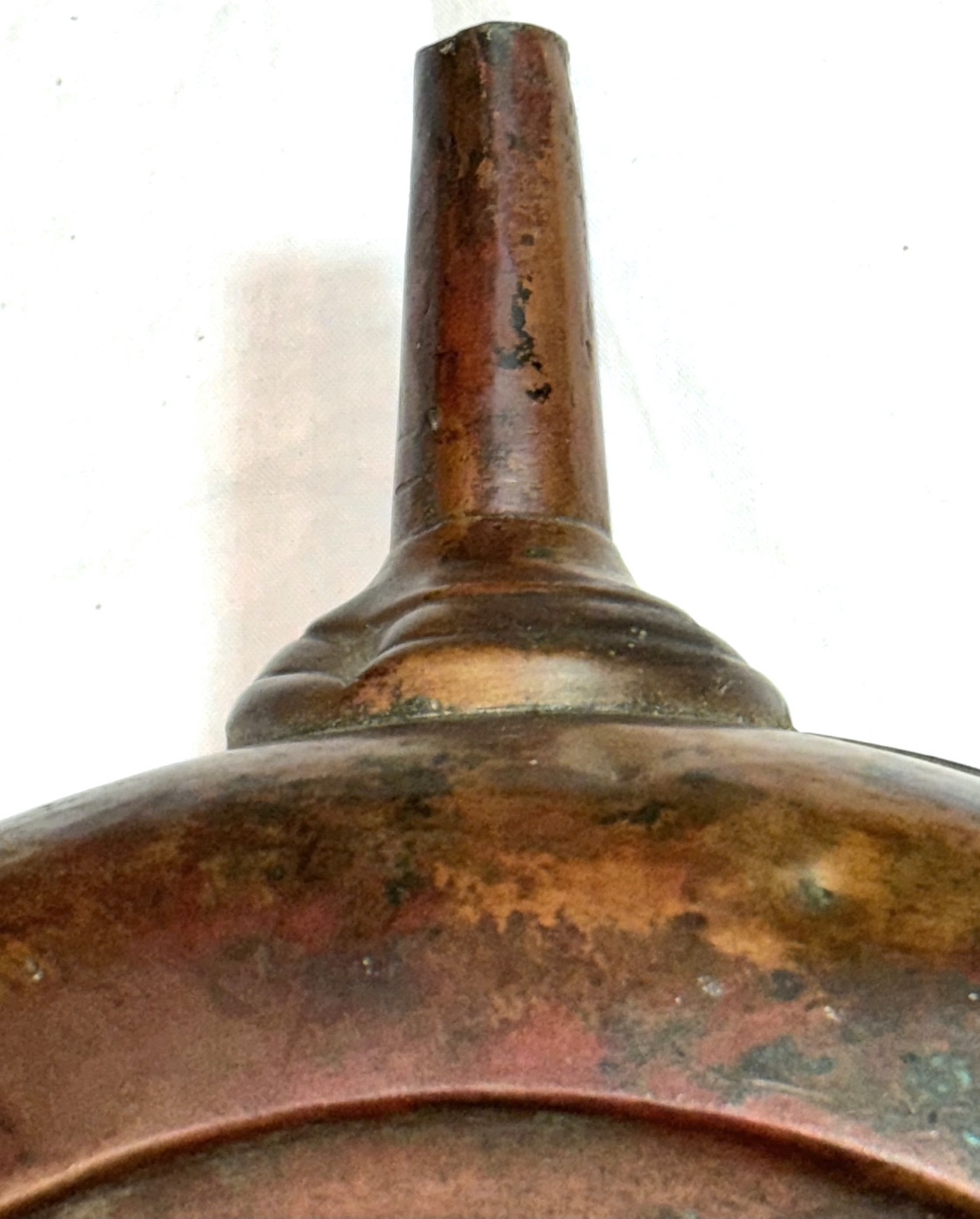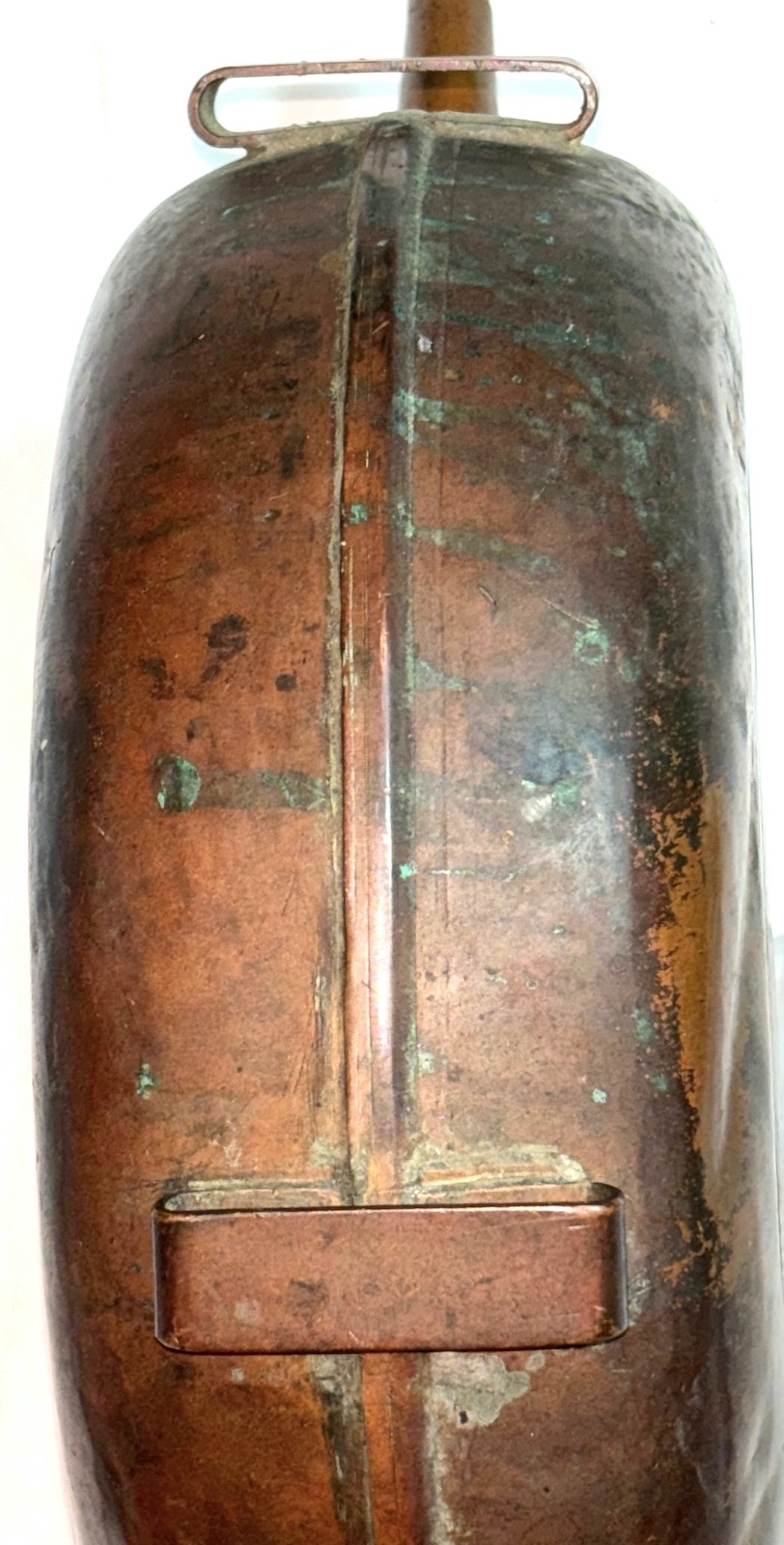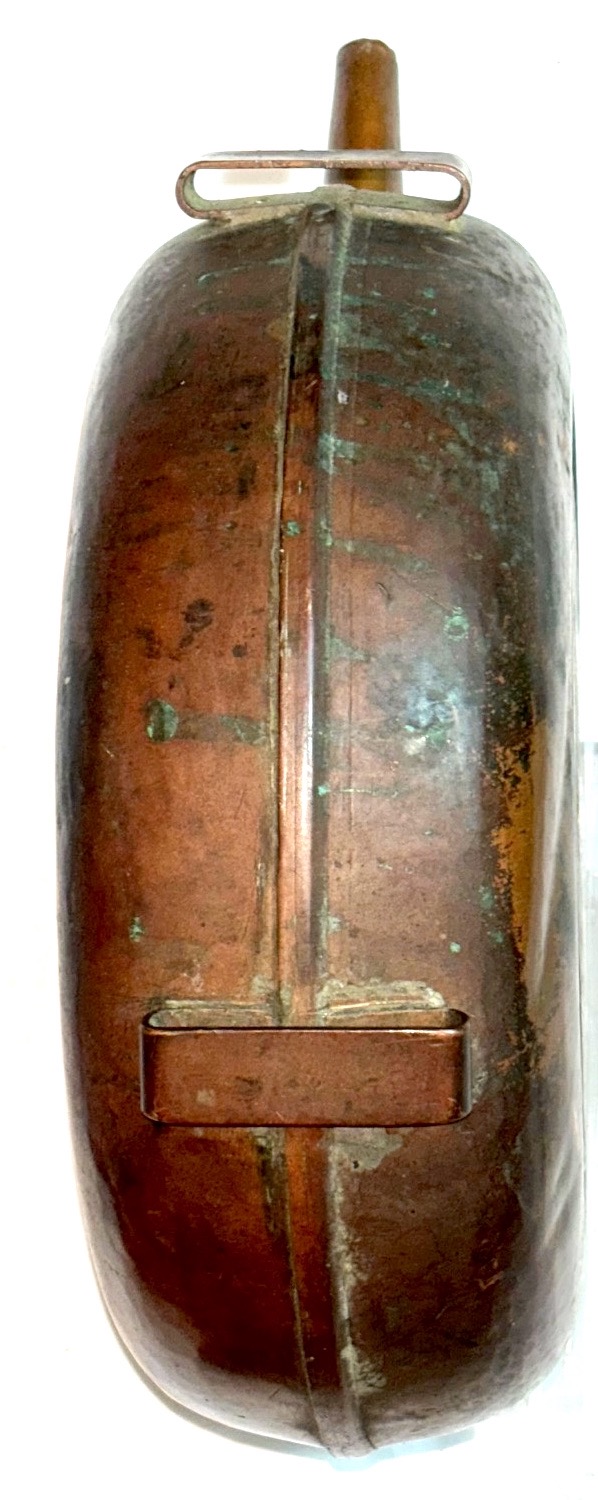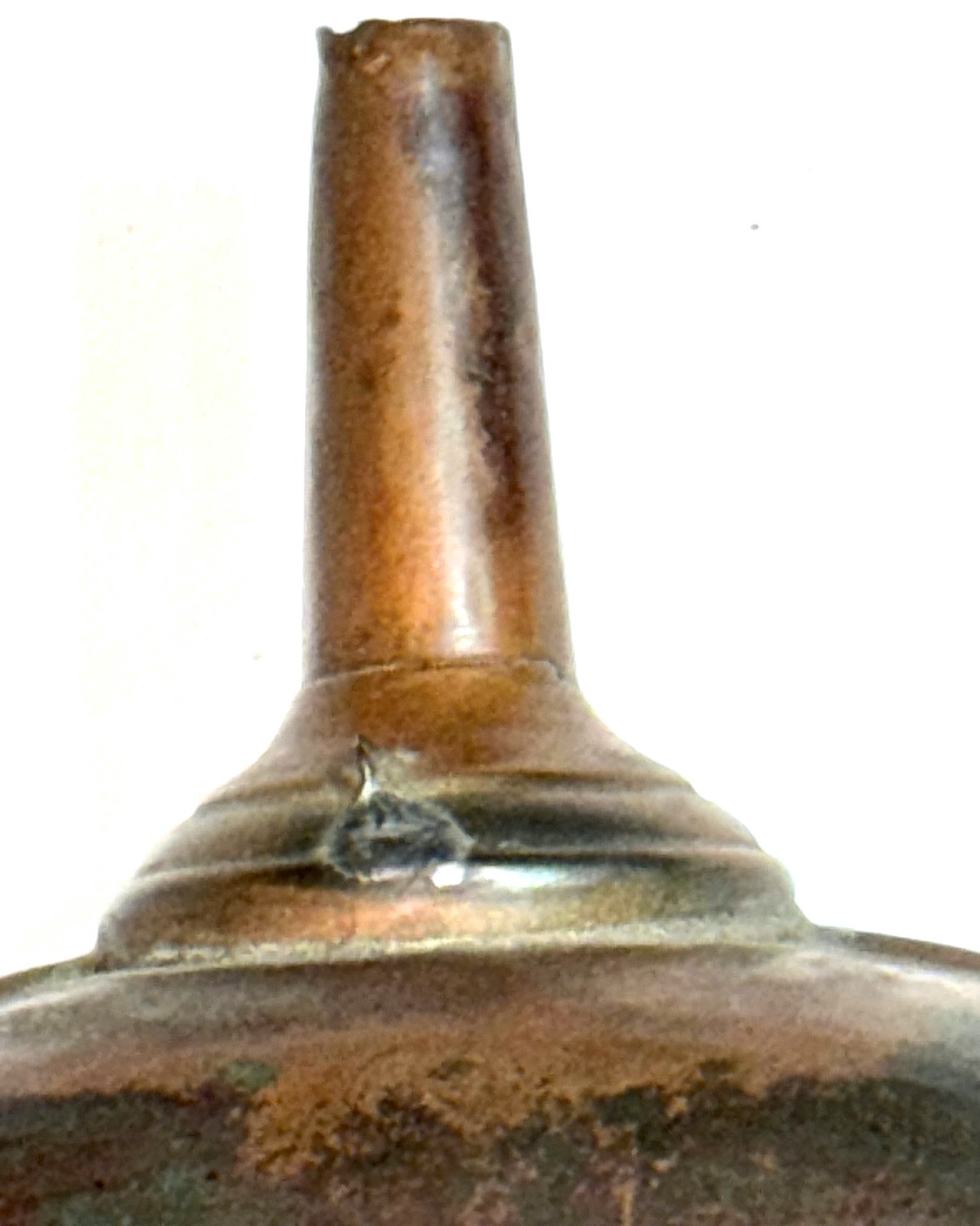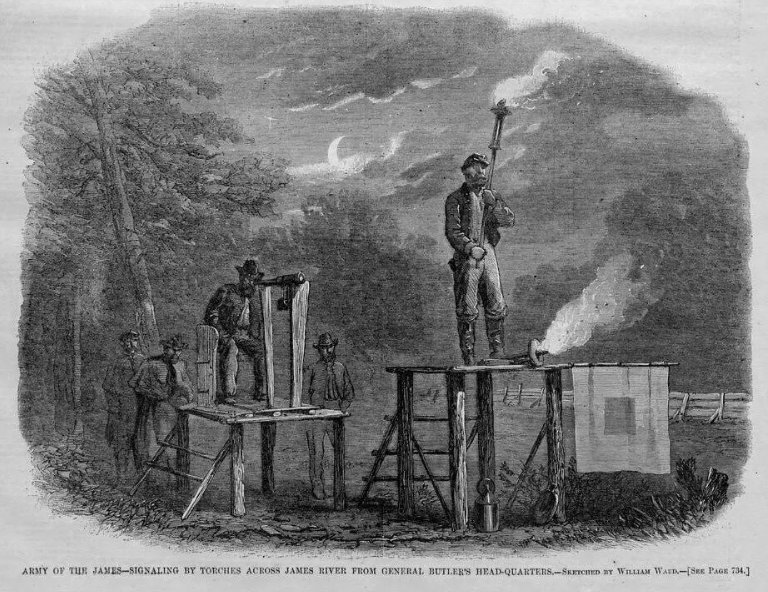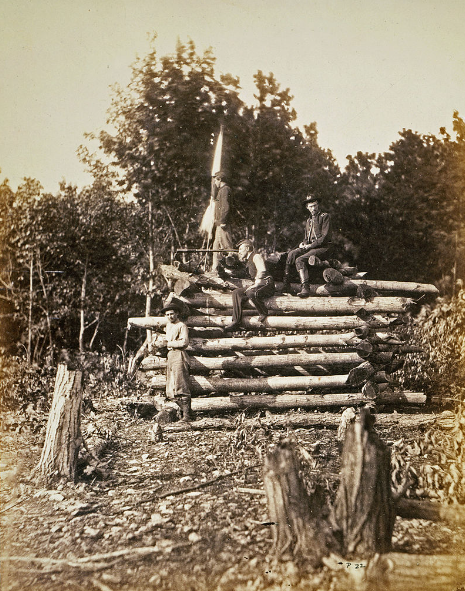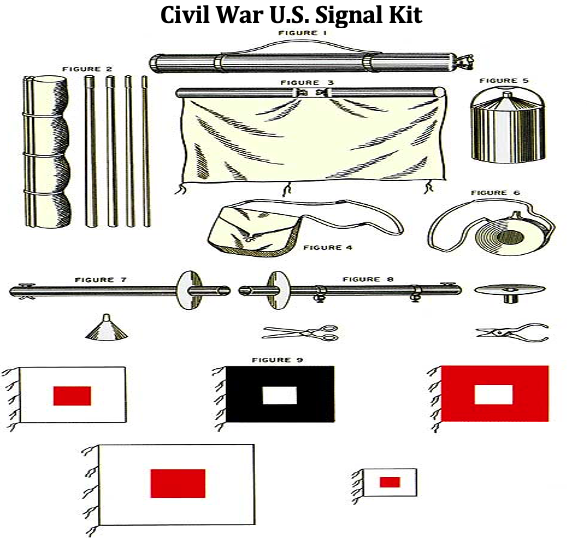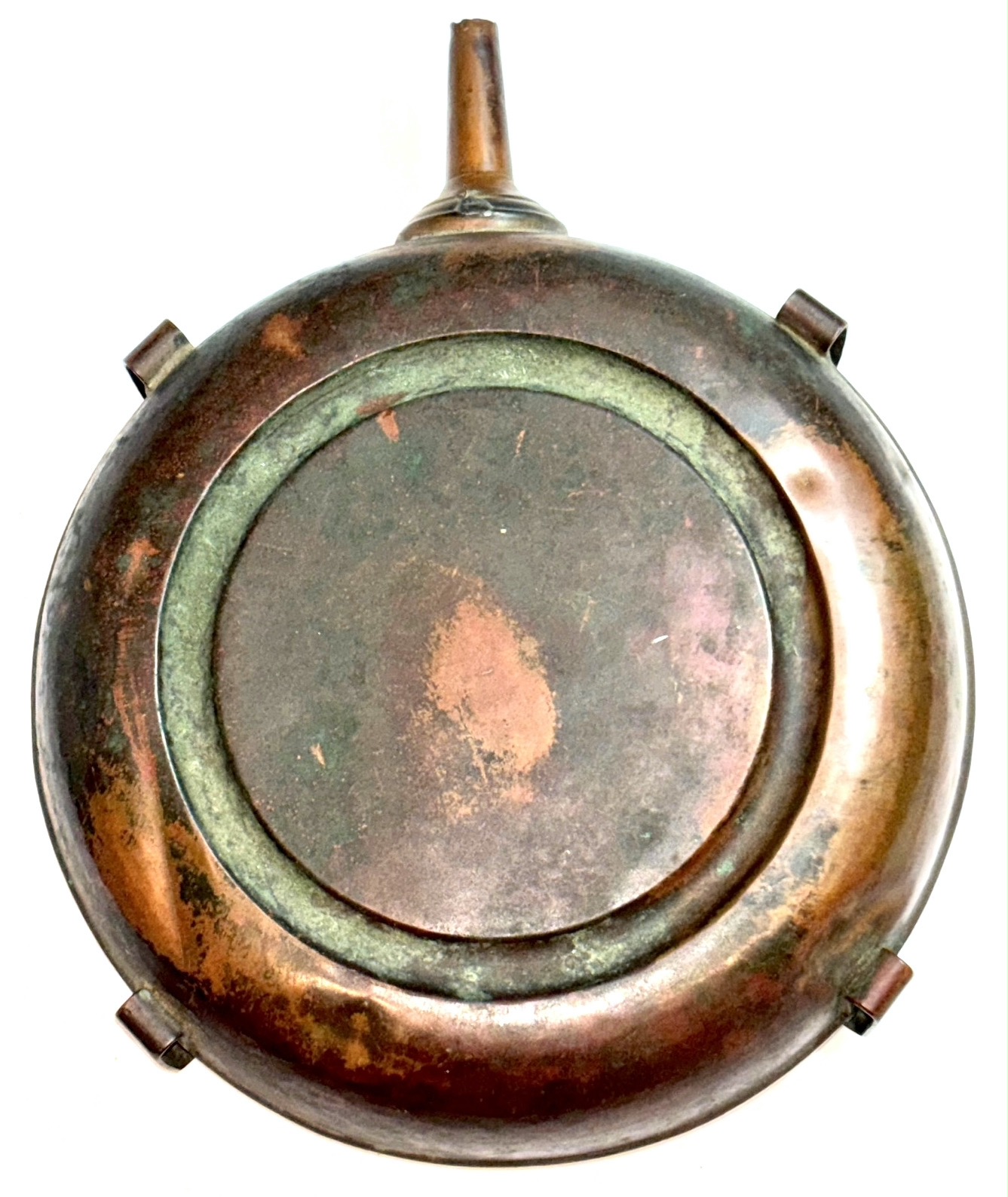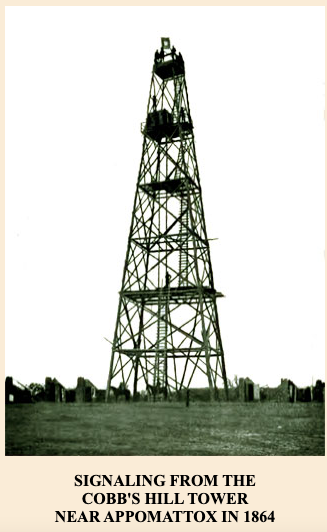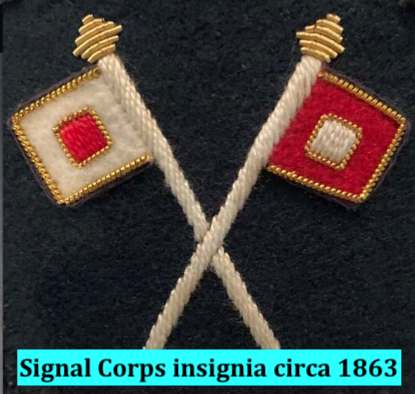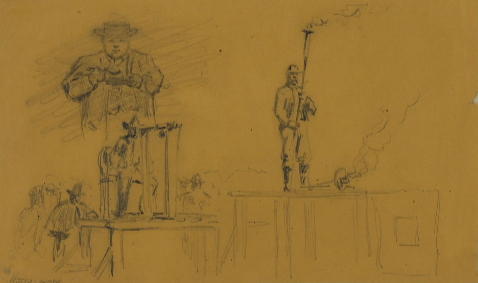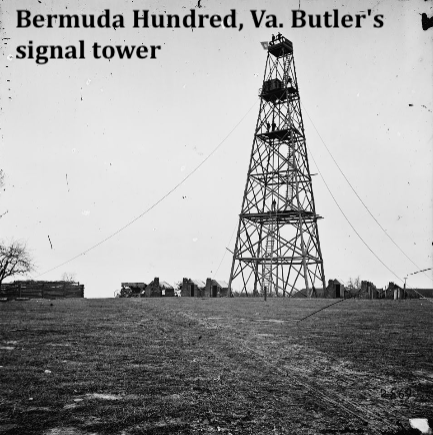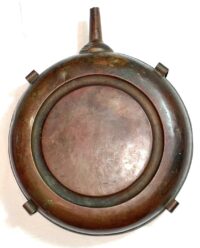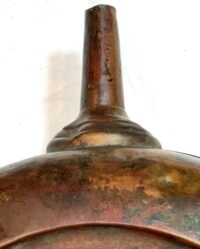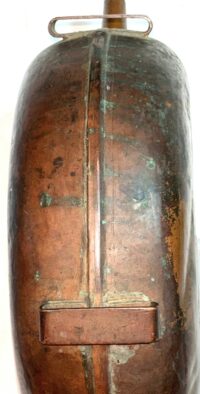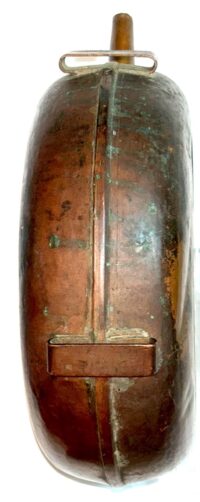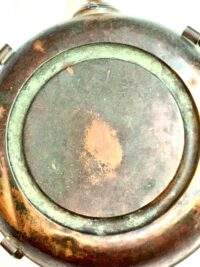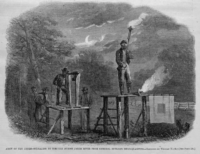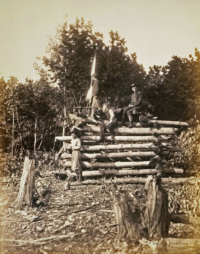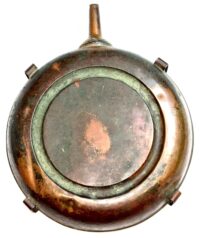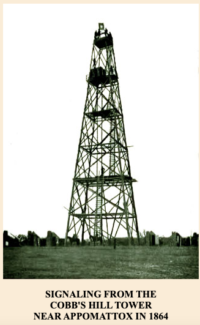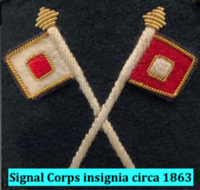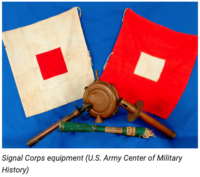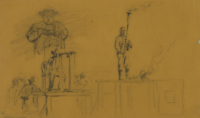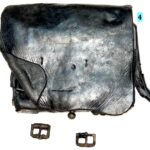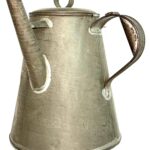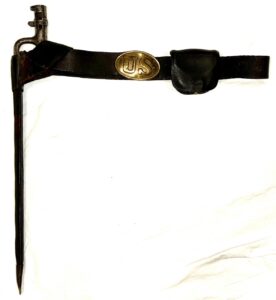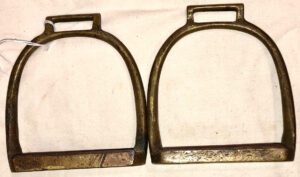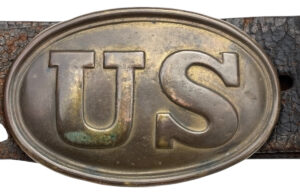Civil War U.S. Signal Corps Copper Canteen
$625
Civil War U.S. Signal Corps Copper Canteen – These large, copper U.S. Signal Corps canteens were utilized, during the Civil War, by members of the Signal Corps to transport turpentine and other flammable fluids to supply torches that were being utilized during nighttime signaling processes. All signal officers were required to have one of these canteens for evening use. Capable of holding a gallon of fluid, the copper and brass construction was utilized to preclude sparking. These canteens are quite sturdy in construction, made up of two sections of copper, seamed together along the canteen’s sides; in addition, along the sides, are four sling guides to support a wide, leather carrying sling. The base of the spout of the canteen fits over the joining seam of the body of the canteen. There is a small, wire loop soldered at the base of the spout which probably was a means of attachment for a chain which, in turn, was attached to some form of stopper. The canteen remains in overall very good condition, exhibiting a couple of minor dings and a patina incurred from period use and age.
Measurement: Diameter – 9.75”
The Signal Corps in the American Civil War comprised two organizations: the U.S. Army Signal Corps, which began with the appointment of Major Albert J. Myer as its first signal officer just before the war and remains an entity to this day, and the Confederate States Army Signal Corps, a much smaller group of officers and men, using similar organizations and techniques as their Union opponents. Both accomplished tactical and strategic communications for the warring armies, including electromagnetic telegraphy and aerial telegraphy (“wig-wag” signaling). Although both services had an implicit mission of battlefield observation, intelligence gathering, and artillery fire direction from their elevated signal stations, the Confederate Signal Corps also included an explicit espionage function.
The Union Signal Corps, although effective on the battlefield, suffered from political disputes in Washington, D.C., particularly in its rivalry with the civilian-led U.S. Military Telegraph Corps. Myer was relieved of his duties as chief signal officer by Secretary of War Edwin M. Stanton for his attempts to control all electromagnetic telegraphy within the Signal Corps. He was not restored to his role as chief signal officer until after the war.
To serve in the Signal Corps, candidates had to pass a strict exam consisting of reading, writing, arithmetic, surveying, and topography. Once chosen, the soldier was assigned to a signal party, usually consisting of one officer and several privates. The officer was responsible for encoding and decoding signals, while the privates would wave the flag and observe incoming messages. The soldiers were all mounted and could move quickly from place to place. The equipment they needed, including several different sizes of flags, torches for night signaling, and telescopes, could be quickly packed up and transported on horseback. The average distance that signals were sent and received was from 8 to 15 miles, depending on weather conditions. Stations would often be set up in a relay system, ending at a location with access to a telegraph.
Civil War U.S. Signal Kit


